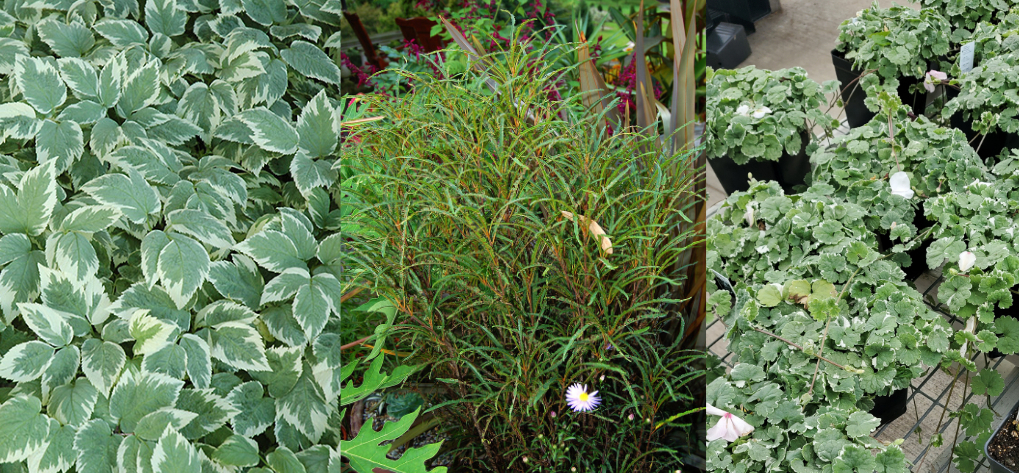MELeaf: A Newsletter From the Horticulture Program, June 10, 2024
In this issue:
Changes are happening to pesticide labels to address potential impacts of pesticides on endangered species. New pesticide labels may direct applicators to check Bulletins Live! Two (BLT) to determine if the application site is in a pesticide use limitation area (PULA) and any requirements that must be followed to protect endangered species. These changes are already appearing on some pesticide labels (especially herbicides) and will be showing up on others soon. Applicators are only required to consult BLT if instructed by the pesticide label that came with the pesticide container. Remember to always fully read each pesticide label before purchasing or using a product, even when it is a product you have used multiple times in the past.
What is Bulletins Live! Two?
Bulletins Live! Two (BLT) is a web-based application that allows users to access information about the steps that must be followed to ensure that a pesticide application will not harm a threatened or endangered species or the species critical habitat.
To use BLT user’s input:
- the application site using an address, coordinates, or manually selecting the area on a map;
- the application month and year; and
- the pesticide product’s EPA registration number.
With this information, BLT generates a map showing the pesticide use limitation area (PULA) and a bulletin that describes any additional specific use requirements that must be followed when the application of that pesticide occurs within the PULA. Applicators are required to follow both any instructions found on the pesticide label and on the bulletin generated by BLT.
Compliance with any instruction in BLT is mandatory and the pesticide applicator’s responsibility. Although it isn’t required, applicators are encouraged to save any bulletins and keep them with their pesticide records, even when there are no pesticide use limitations.
Additional Resources
Bulletins Live! Two (BLT)
EPA BLT Tutorial
June 18, 1:00 PM: Environmental Protection Agency Webinar on Mitigation Menu Website to Protect Nontarget Species from Pesticide Exposure
Webinar Recording: Endangered Species Act and Pesticides: An Example
Board of Pesticides Control

Ryan Scherpf, a U-Maine student in the Environmental Horticulture Program, is a rising senior and will help the Horticulture Program continue its work on reducing the spread of invasive plants through nursery stock. Ryan has prior experience working for a golf club in New Hampshire and managing a large landscape in the same area. He will be helping develop three weed risk assessment and management workshops across the state this summer and fall. Ryan will also work with five volunteer nurseries or garden centers to help them develop a site-specific weed risk assessment and development of best management practices to reduce those risks.
If you are interested in hosting an invasive plant workshop or working with Ryan to develop a weed risk assessment and management plan for your business email the Horticulture Program.
|
March and April of this year were particularly cloudy and rainy, with mild temperatures. Some weeks passed with almost no sunshine and inspectors heard many concerns from growers about the growing conditions. Some of the challenges growers encountered because of the weather:
-
Watering and Fertilizing - Without the sun, photosynthesis slows, and plants do not take up much water. When cloudy conditions are predicted, hold off on watering until the sun returns. While cutting back on watering may free up staff time to work on other projects, some growers were concerned about watering enough to fertilize plants properly. Other growers expressed concern that salts were building up in media because there were few sunny periods to irrigate with clear water. Monitor salt levels in media by testing the electrical conductivity (EC) of the substrate. Many growers have good results using the pour thru method for pH and EC testing.
-
Diseases - Growers that did water plants during long stretches of cloudy weather sometimes had plants sitting in wet media for days on end. This can increase the risk of root rot diseases such as Pythium, which was observed on Angelonia, and snapdragons this spring. Always have suspected root rots identified in order to apply the most appropriate pesticide to control the disease. UMCE Plant Disease Diagnostic Lab. Stem and foliar diseases such as botrytis and powdery mildew can also be problematic in wet or humid conditions. Keep water off foliage and space plants to allow for good air circulation.
-
Fungus gnats - Fungus gnat larvae need wet soil to survive. A particularly high population of fungus gnats was observed in pots of coleus. Larvae could be seen on the soil surface and were eating the roots, preventing the plants from growing. Overall, inspectors did not observe many concerning populations of fungus gnats this year, possibly indicating growers are monitoring their water needs well. Manage smaller fungus gnat populations by keeping soil on the dry side.
-
April snowstorm - After several months with mild weather, the snowstorm that hit the first week of April delayed many shipments of propagative plant material. Some plants sat on trucks for several days and arrived at Maine greenhouses in less than perfect condition. We recommend businesses communicate with their suppliers when severe weather is predicted so they know what is happening with their orders and can plan ahead.
Despite concerns regarding the weather, most of the plants observed by inspectors have looked healthy and happy. We have observed many of the usual pest and disease culprits present in greenhouses:
-
Aphids - If you were frustrated by early populations of aphids this spring, you were not alone. 2024 has been another year in which aphids have been the primary pest found in most greenhouses. Early aphid populations are a concern because populations build quickly. Aphids were found most frequently on Ipomoea, peppers, Calibrachoa, Vinca, Fuchsia, and Dahlia, but were also found on many other annuals, vegetables, tropicals, perennials and a few woody plants.
-
Thrips - Western flower thrips were observed on Ipomoea at several greenhouses. Infestations were also found on Gerbera, Argyranthemum, eggplant, Verbena and Thunbergia. Inspectors have been looking closely at tropical plants such as Hibiscus and Dipladenia as well as peppers for Thrips parvispinus a newer, difficult to control species of thrips that has yet to be found in Maine.
-
Broad mites - This microscopic mite species cannot be seen with the naked eye; however, they can do significant damage to plants. Symptoms include stunted and distorted growth that often cause foliage and growing tips to be thickened and leaves to not fully expand. This year we have found broad mites on Thunbergia and Torenia.
 Red circles: broad mite eggs, Black rectangles: Female nymphs and a male carrying a female nymph
-
Virus symptoms - Dahlias at several greenhouses were found to have symptoms of either dahlia mosaic virus or dahlia leaf clearing virus. Inspectors are also assisting the University of Maine Cooperative Extension Plant Disease Diagnostic lab with a survey for tomato brown rugose fruit virus (TOBRFV). If you observe tomato, peppers or other solanaceous crops with viral symptoms such as mottling, ring spots, distorted growth, or other discoloration, please contact the Horticulture Program to collect a sample.
 Tomato brown rugose fruit virus symptoms
Invasive Plants
The start of 2024 brought with it changes to the Invasive Plant Do Not Sell List. Inspectors have observed a number of invasive plants for sale that were newly added to the list this year including creeping Charlie/ground ivy (Glechoma hederacea), European mountain ash (Sorbus aucuparia), wintercreeper (Euonymus fortunei) and Callery pear (Pyrus calleryana). Please remember that the ban on the sale of these plants includes all cultivars, varieties and hybrids and in some cases, plants may be labeled with alternate scientific names. In one case we observed many fernleaf buckthorn plants at a business. The plants were labeled with the species name Rhamnus frangula, a synonym for Frangula alnus, a plant on the Do Not Sell list.
Also, a sign or label must now be displayed with Rosa rugosa plants offered for sale. The Horticulture Program has weather resistant signs available for free along with other outreach materials including a comprehensive guide that includes everything you need to know about Maine’s invasive plant rule. Order signs, factsheets, bookmarks and other invasive plant outreach materials
 All three of these plants on the invasive plant list were observed for sale under alternate scientific names. Left to right: Aegopodium podragaria (syn. Aegopodium variegatum, bishop's weed), Frangula alnus (syn Rhamnus frangula, fernleaf buckthorn), Glechoma hederacea (syn Hiedra terrestre, ground ivy)
|